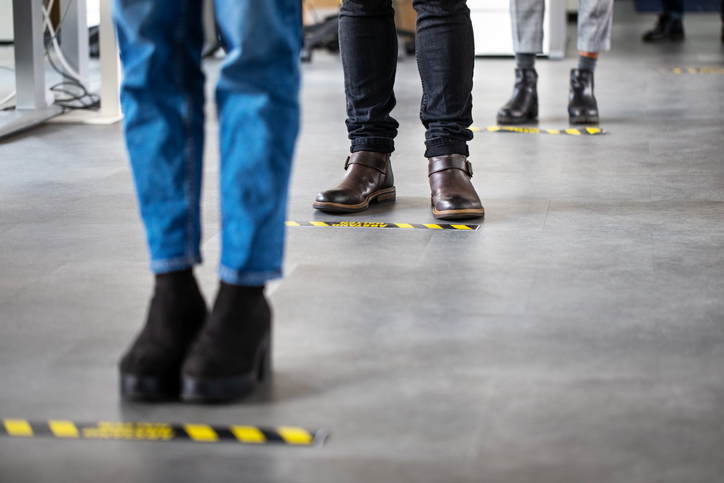As stay-at-home orders began rolling in, and businesses started shutting down, people had way more time on their hands and nowhere to go. Consequently, it should be no surprise that video consumption dramatically increased. Correspondingly, with people spending less time in their cars, radio initially saw a substantial loss of listeners and a shifting from broadcast to podcast (and more). You can probably guess what happened to out-of-home by virtue of its name. Billboards aren’t nearly as effective when there is a huge decrease in cars passing by.
The on-going pandemic drastically changed the daily lives of most people and triggered an economic recession in 2020. By exploring already evolving media habits and consumer behavioral trends from 2020, advertisers can be better prepared to anticipate which trends will continue into, and perhaps throughout all of 2021.
TV / Video
Regardless if it was traditional linear TV or streaming through connected devices, overall viewership was way up. However, certain types of programming outperformed others, while some historically solid programming saw declines:
- News programming saw enormous gains. FOX News, CNN, and MSNBC each set viewership records. National broadcast and local news recorded strong gains as well.
- The elimination of the commute for so many people led to a decline in Early Morning local programming (5a-7a), while spurring a shift to the 7a-9a hours, as well as a general increase in most day-time programming.
- The loss of live sports was a financial disaster for all who carry it, but the absence of actual sports served to “eventize” new sports programming when it did air —the 2020 NFL Draft had its most viewers ever, and ESPN’s “The Last Dance” was the highest-rated original series for the network in more than 15 years. Curiously, events such as the Kentucky Derby and The Masters golf tournament, as well as leagues that resumed interrupted seasons, saw major declines in ratings from what was expected on the original air dates (the postponed NBA finals were down 51%!).
Home improvement and cooking networks saw increases as more time at home means more time in the kitchen and for household projects.
Moving forward, overall viewership should remain high, but I expect some programming shifts. News networks will see a reduction in viewers as the new administration looks to be less disruptive, but local news will continue to be strong. Sports should mostly be back on a somewhat normal schedule, and both interest and viewership should be back to pre-pandemic levels. The 2020 shift in Early Morning and day-time viewership will continue as a meaningful return to the workplace is not expected to take place until summer. Additionally, companies may look to downsize their physical office footprint by allowing employees to continue working from home now that it has been proven to be successful.
OTT and CTV Streaming services will continue to benefit and garner more subscriptions, especially if linear TV programming options are limited by virtue of production shutdowns. However, some consolidation is inevitable as subscriber fatigue is a real thing. Fortunately, most of the consolidation can be expected to take place with the non ad-supported properties which advertisers can’t tap into anyway.
Out of Home
No surprise here. Stay-at-home orders across much of the country meant fewer people on the road, using public transportation and in airports. This meant fewer eyes on OOH ads. Those who were on the road traveled shorter distances per day with fewer places to go.
With people staying closer to home, and fewer impressions being generated, OOH companies were forced to make rate concessions on much of its inventory. However, not all OOH products were devalued. Utilizing street level posters and kiosks around grocery stores, medical facilities, hardware stores, and other essential businesses were good opportunities.
Moving forward, I expect the OOH market to pick up as stay-at-home orders lift, vaccinations take place, and people become more comfortable being around lots of people in public settings. Recent data shows road traffic has steadily been increasing since the early days of the pandemic, and in many areas, it is back to 70-80% of pre-pandemic levels. As businesses are phased back in, traffic should continue its ascension.
While the disruption of the daily commute and uncertainty around mass gatherings will play a significant role in the effectiveness and usage of OOH on highways and in places such as airports, stadiums and movie theaters during the first few months of 2021; I expect OOH to return to form as a dominant reach and frequency medium in the second half of the year.
Radio
Overall, you would think that fewer people in their cars would translate to less listening, but radio has long been considered “comfort food” for listeners—a part of their routine, hearing the same personalities each day—and they found ways to keep that aspect of their routines intact.
After initially seeing a dramatic decrease in March and April, overall listening stabilized and began a steady rise to near pre-pandemic levels. How people listened however, is what changed. According to a Nielsen study, the shift out of in-car listening (32% less) translated into gains in other platforms such as listening through computer (12% gain), mobile device (19% gain) or smart speakers (10% gain), with all formats seeing gains. Podcast usage also increased 14%.
Since morning and evening commutes weren’t what they once were, drive time listening became the most negatively impacted day-parts. However, mid-day and weekends saw gains and offered great value and cost efficiency
Moving forward, I expect these listening shifts to stick around as people who have used this time to experiment with various audio platforms will likely continue to use them. This would result in incremental listening gains once in-car listening returns to near pre-pandemic levels which means advertisers should review and update their audio strategy to meet the changing habits of consumers.
The pandemic’s impact on media consumption has been felt across all media channels, and whether or not my expectations materialize, it is clear advertisers will need to keep monitoring changing audience behaviors and be flexible enough to adapt to them.

